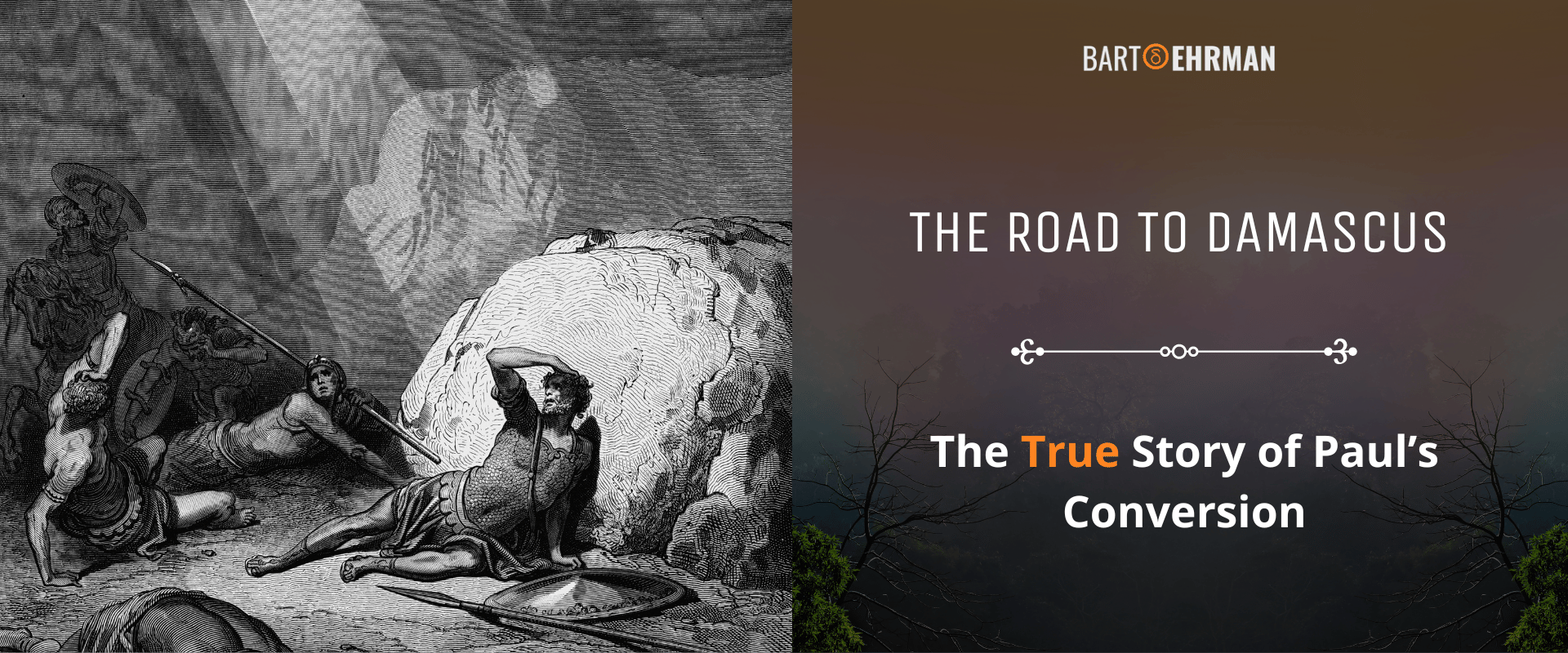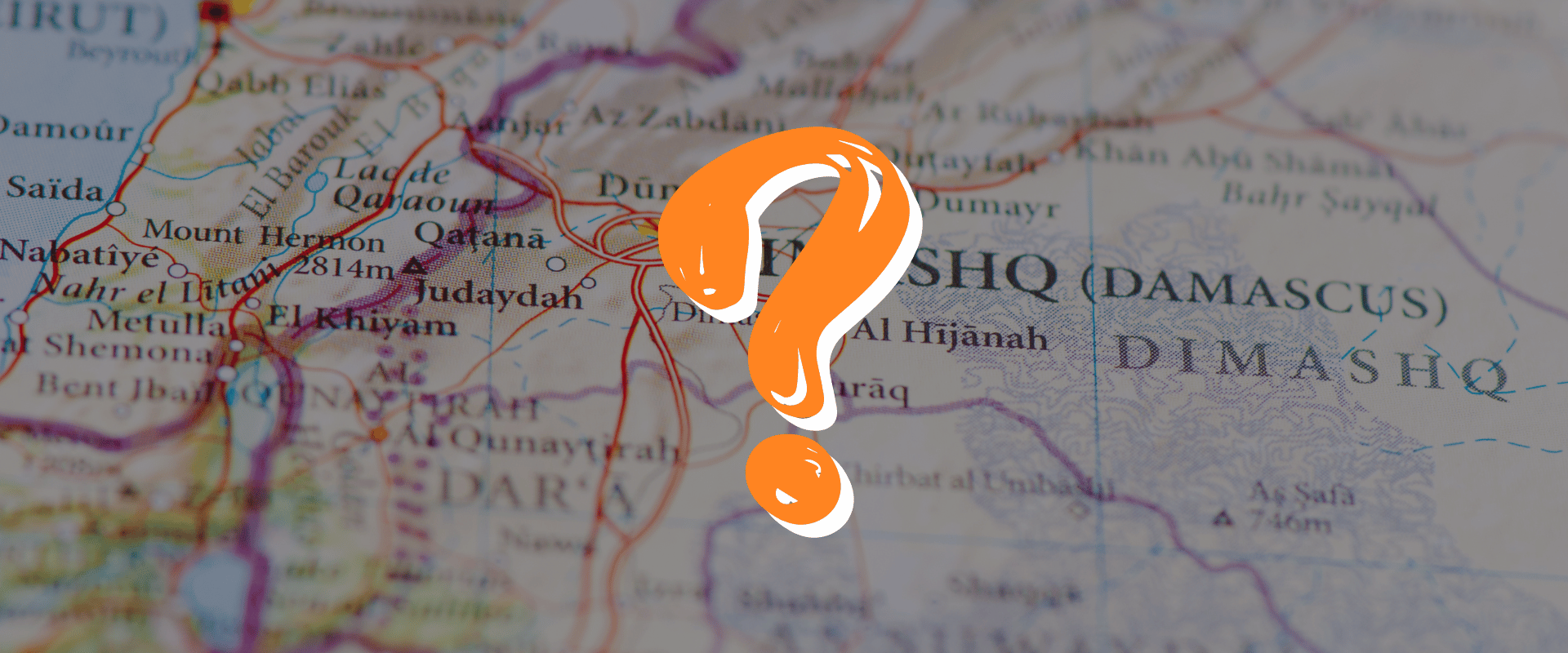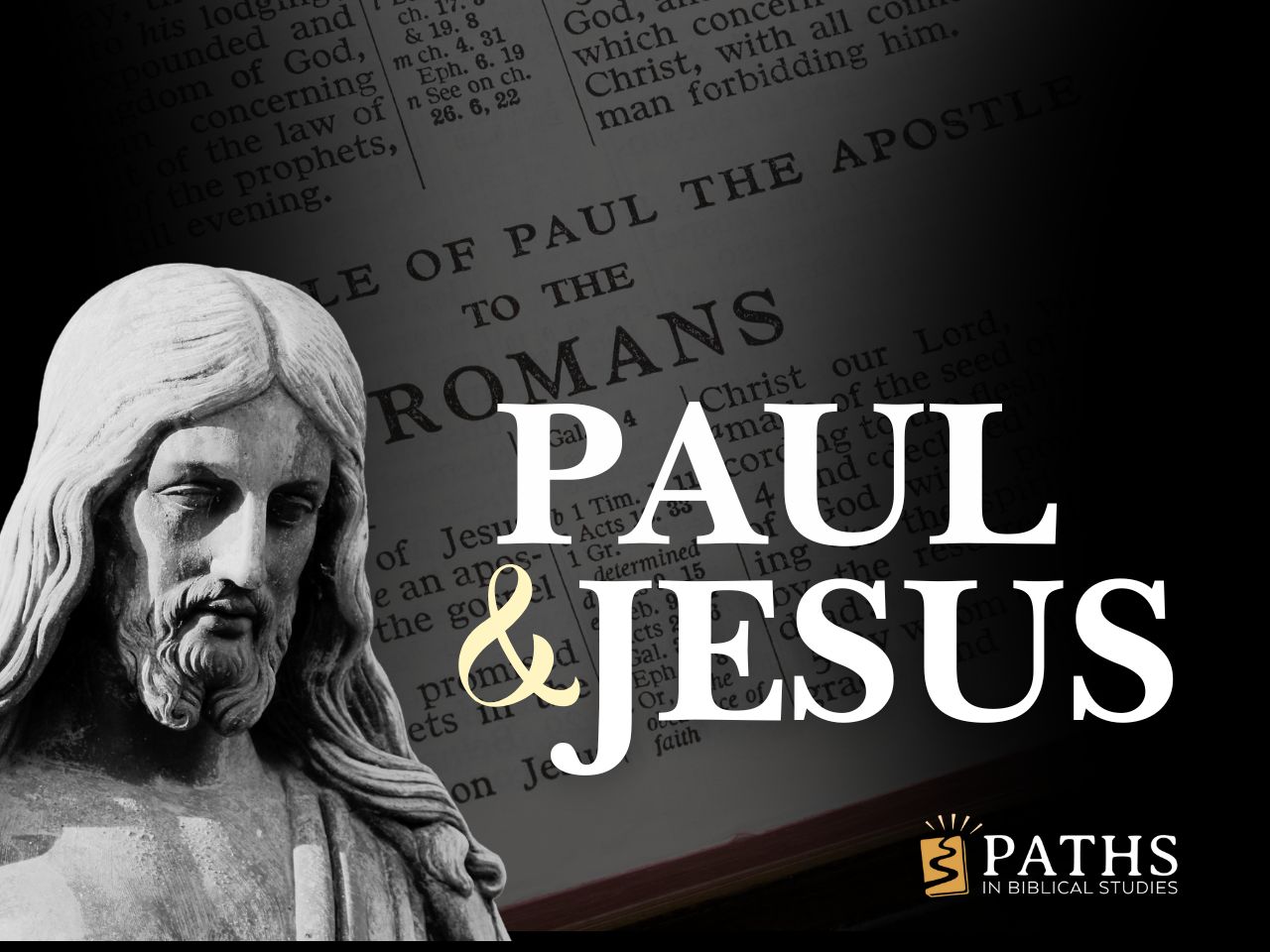The Road to Damascus - The True Story of Paul’s Conversion

Written by Marko Marina, Ph.D.
Author | Historian | BE Contributor
Verified! See our guidelines
Verified! See our editorial guidelines
Date written: April 17th, 2024
Disclaimer: The views and opinions expressed in this article belong to the author and do not necessarily match my own. - Dr. Bart D. Ehrman
Saul of Tarsus, originally a fervent Pharisee and a staunch persecutor of the early Church, undergoes a profound transformation on the road to Damascus. This event marks the beginning of his journey from the Church's adversary to its most passionate advocate, especially among the Gentiles.
However, the path ahead for Saint Paul, as he would come to be known, was fraught with challenges. He faced opposition not only from non-Messianic Jews but also from within the Christian community and the Roman authorities. To some, he appeared misguided; to others, delusional or even dangerous. Yet, it was this pivotal encounter on the Damascus road that reshaped his life and, consequently, the future of Christianity.
In this article, we aim to explore the true story of Paul's conversion. We will delve into the historical context of Paul's life, the narrative of his transformation as presented in various sources, and the debates surrounding the differing accounts of this event. Our goal is to present a comprehensive and objective view that is accessible to all readers, regardless of their prior knowledge of the subject.
By examining the available evidence and scholarly interpretations, we hope to shed light on the significance of Paul's conversion and its impact on the early Church and beyond. Through this exploration, we invite readers to gain a deeper understanding of one of Christianity's most transformative moments.
But before we delve deeper into the complexities of Paul’s conversion, consider enriching your understanding of early Christianity with the new, free online course "Did Peter Hate Paul?" offered by a renowned expert, Bart D. Ehrman. This course dives into the nuanced relationship between Peter and Paul, exploring early Christian writings and the intriguing evidence of their interactions/conflicts.

Paul’s Conversion: Understanding the Historical Context
Before his transformative experience on the road to Damascus, Paul's life provides a fascinating backdrop to one of history's most pivotal moments.
It's crucial to understand that Paul lived during a time before the gospels as we know them were written. The concept of being a "Christian" was not yet defined; thus, Paul wouldn't have identified himself as such. Instead, he saw himself as a Jew who had received a divine calling from Jesus to share the message of his resurrection and the imminent establishment of God’s kingdom with the Gentiles.
When we begin to explore Paul's story, our main sources are the letters he wrote and the information about his life and work derived from the Acts of the Apostles. It's important to note that Paul's letters are considered primary sources, offering a direct window into his thoughts and teachings.
However, they also present a subjective view, primarily focusing on how Paul saw himself and occasionally reflecting on how others viewed him, according to his perspective. Moreover, Paul probably wrote only 7 of the 13 letters attributed to him in the New Testament. Others were forged by later Christians to push their theological ideas across the early Christian communities.
The Acts, on the other hand, are seen as secondary sources, written up to 70 years after Paul's death. This text aims to provide a theological perspective on Paul's ministry, often highlighting the divine guidance behind both Jesus' mission and the early Christian community's efforts.
This means that while Acts offers valuable insights, it does so with a specific interpretative lens, as pointed out by Bart Ehrman. Ehrman emphasizes that the author of Acts wasn’t just recording events but was crafting a narrative with a clear purpose, showcasing the divine plan at work.
Before his profound encounter on the road to Damascus, Paul was a Greek-speaking Jew from the Diaspora. In other words, he lived outside the traditional Jewish homeland and communicated primarily in Koine Greek.
His writings reveal that he came from the tribe of Benjamin and was a Pharisee, a group known for their flexible interpretation of Jewish Law and their belief in apocalyptic eschatology, including the coming of a Messiah and the resurrection of the dead at the end times.
These beliefs aligned with early Christian (apocalyptic) views, suggesting that Paul's conversion didn't require a complete overhaul of his fundamental beliefs. What changed dramatically was his perspective on Jesus as the risen Messiah, a shift that began with his journey on the road to Damascus.
This shift, from persecutor to proponent, underscores the profound impact of Paul's conversion, setting the stage for our deeper dive into what happened on that road to Damascus.
Summary of Paul’s Conversion in the Bible
The story of Paul’s conversion is narrated in the Acts of the Apostles, with three separate accounts found in chapters 9, 22, and 26 - each giving different perspectives and details of the event. We’ll return to these differences in the next section. For now, let’s try to present a summary of his conversion as depicted in the New Testament.
According to these three accounts, Paul was on his way to Damascus. His mission was to arrest Jesus’ followers and bring them back to Jerusalem for persecution. As he was getting closer to Damascus, a sudden light from heaven flashed around him. He fell to the ground and heard a voice saying: “Saul, Saul, why do you persecute me?”.
The voice identified itself as Jesus, instructing Saul to continue into Damascus, where he would be told what he was to do. Blinded by the experience, Saul was led into the city by his companions.
In Damascus, a disciple named Ananias, following God's vision, healed Saul's blindness and baptized him. This event marked Saul's conversion, and he began to preach that Jesus was the Son of God, astonishing those who knew his former fervent opposition to Jesus' followers.
The accounts in Acts emphasize the miraculous nature of Paul's conversion and highlight the direct intervention of Jesus and the immediate change in Paul's beliefs and actions.
Unfortunately, Paul never gives a detailed account of what happened in his letters. At most, he alludes to the experience on the Damascus road without giving any further details. In his letter to the Galatians (1:15-16), for example, he describes his revelation as an immersion call and explains that “it pleased God to reveal his Son to me” so that he could preach among the Gentiles.
This emphasis on divine revelation and calling is consistent across Paul's letters, underscoring the personal and transformative nature of his experience, though without the dramatic narrative elements found in Acts.
But what can we reveal if we compare these accounts - not as theologians looking for a profound meaning but as historians wanting to reconstruct the past?
Paul’s Conversion: A Comparative Perspective
When we delve into the narratives of Paul's transformative encounter on the road to Damascus as recorded in the Acts, we encounter a series of discrepancies that remind us of the difficulties in understanding the details surrounding Paul’s life. They are excellently summarized in Bart Ehrman’s book Peter, Paul, and Mary Magdalene.
Did You Know?
Paul's day job as a "tentmaker," as mentioned in Acts 18:3, wasn't just a way to make ends meet - it was potentially a strategic element of his missionary work! This mobile profession likely facilitated his travels from one city to another which allowed him to engage with new communities under the guise of his trade.
Some scholars hypothesized that upon arriving in a new town, Paul would set up shop in a bustling area where fellow craftsmen gathered, thus placing himself at the heart of the local economy and social life. Imagine Paul, threading his needles and crafting tents, while casually striking up conversations with customers. These interactions provided the perfect backdrop for discussions on deeper matters of religion. It's easy to imagine Paul, amidst discussions on tent specifications, transitioning to his testimony with, "I have to tell you what happened to me on the road to Damascus" remark.
Firstly, there is a notable difference in how Paul’s companions experienced the event. In Acts 9, it’s stated that they “heard the voice but saw no one”, implying an auditory experience without a visual counterpart. Constranstigly, Acts 22 recounts that the companions “saw the light but did not hear the voice”, presenting a direct inversion of their experience.
This discrepancy not only raises questions about the specifics of the vent but also about the nature of oral traditions and the reliability of witness testimony.
Secondly, the physical reactions to the vision vary: Acts 9 mentions that Paul's companions remained standing while Paul was struck down, whereas Acts 26 describes all parties falling to the ground, suggesting a collective experience of the divine presence.
Lastly, the guidance Paul receives post-conversion differs across accounts. In the first narrative, he is directed towards Ananias in Damascus for further instructions, but in the final account, Jesus himself provides the directions, bypassing the need for an intermediary.
For a clear presentation of these discrepancies, take a look at the table below.
Aspect | Acts 9 | Acts 22 | Acts 26 |
|---|---|---|---|
Companions’ Experience | Heard a voice, saw no one | Saw light, but did not hear the voice | (Not specified in this manner) |
Physical Reaction | Companions stand, Paul falls | (Not specified in this manner) | All fall to the ground |
Instructions Post-Event | Directed to Ananias in Damascus | (Similar to Acts 9) | Direct instructions from Jesus |
These discrepancies could stem from “Luke’s” editorial choices, suggesting that he either had access to different traditions about the road to Damascus encounter or chose to adapt a single story to fit different narrative contexts. This adaptation could serve various theological or literary purposes, highlighting different facets of Paul's conversion experience.
While these are all interesting hypotheses, they don’t help us a lot in answering what the German historian Leopold von Ranke emphasized as the key task of historians: To know “Wie es eigentlich gewesen (How it really was?)?”
And still, the curiosity of a historian remains: What happened to Paul on the road to Damascus? Can we extrapolate the gist of the event? Let’s take a closer look!

Conversion of Saul: What Happened?
The transformative event on the road to Damascus remains one of the most debated episodes in early Christian history. Based on that event, some scholars even argued that Paul was the true founder of Christianity - a notion we examined in our earlier article!
Nevertheless, this experience is central not only to understanding Paul's shift from a persecutor of Christians to a principal apostle but also to interpreting the broader narrative of early Christian theology.
However, it's crucial to approach this event with the understanding that the limits of natural explanations and causes bind historians. As previously discussed, the validity of miraculous claims is beyond the historian's purview. We are left to navigate the terrain of historical facts and the interpretations that arise from them.
Despite the varied accounts and the sparse details, the essence of what occurred on the road to Damascus can be distilled from the texts. Paul himself attributes his transformation to an encounter with the resurrected Jesus.
In his letter to the Corinthians (1 Cor 15:8-11), he places himself as the final witness to Jesus' resurrection, marking the inception of his transition from an adversary of the nascent church to one of its most ardent advocates. This encounter is further alluded to in his letter to the Galatians (Galatians 1:16) where he claims that God revealed his Son to him.
As Klaus Haacker points out, "The nature of this event is attested by both types of evidence – Acts and Pauline letters – as a visionary encounter with Jesus, risen from the dead and normally hidden in the realms of heaven."
This consensus suggests that, at its core, Paul's experience was a deeply religious one, interpreted as a direct interaction with the risen Christ - an interaction that convinced him of the imminence of the end times, Jesus’ return, and the establishment of God's kingdom on Earth.
Johan C. Becker explains the immediate consequences of Paul’s conversion: “The Christophany [the appearance of the risen Jesus to Paul] then is interpreted by Paul in terms of his prior apocalyptic convictions, and it both modifies and intensifies those convictions radically. It signifies for him primarily the inauguration of the reign of God, which according to God’s purpose must embrace his whole creation, that is, both Jews and Gentiles, and for which Paul must prepare the way.”
However, the scholarly debate extends to how we should categorize Paul's experience. The term "conversion" is frequently used, but it may not fully encapsulate the nature of Paul's transformation.
This term implies a departure from Judaism and an entry into Christianity, a narrative that doesn't quite fit Paul's understanding of his mission. Paul saw himself as continuing within the Judaic tradition, preaching what he believed was the fulfillment of its teachings through the revelation of Jesus as the risen Messiah.
This view suggests that "conversion" might not be the most accurate term to describe his experience. Consequently, some scholars prefer to describe it as a “call/conversion” - a divine summons that redirected his life and mission without necessitating a break from Judaism. This term, as Walter F. Taylor Jr. notes, “ensures that we do not claim too much for Paul’s Damascus Road experience but that we do claim enough.”
Moreover, the exact timing of Paul's road to Damascus experience is a subject of speculation among scholars. Speculations like those from Gerd Ludemann suggest the year 33, but it’s important to recognize the inherent uncertainty in pinpointing such dates with precision.
Regardless of the specific terminology used to describe it or the exact date it occurred, the event on the road to Damascus undeniably stands as a monumental moment in Paul's life and the history of early Christianity.
It represents a profound religious experience that dramatically altered Paul's perspective on divinity and salvation, shaping the trajectory of his missionary work and theological contributions. The importance of Paul’s conversion extends far beyond his life, influencing the development of Christian thought and doctrine in ways that continue to resonate through the ages.
Summing up Conclusions
Paul's transformation on the road to Damascus is not only a pivotal narrative in the history of early Christianity but also a fascinating case study of the dynamics of religious experience and identity transformation.
Through examining the historical context, the varying accounts, and the scholarly interpretations of Paul's conversion, we've delved into the nuances of how religious identities and beliefs can evolve in response to profound experiences.
In concluding our exploration of Paul's conversion, it’s evident that this event isn’t just a cornerstone of Christian history but also an example of the transformative potential of personal experiences. I wouldn’t argue that Paul was a founder of Christianity, but his life and legacy influenced the future of a new religion in so many ways we can’t even begin to imagine. And there is no doubt that everything began with the mysterious experience Paul had while he was traveling to Damascus!

